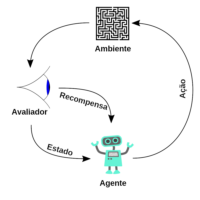Understanding Transfer Learning – The Challenges and Opportunities Introduction to Transfer Learning Transfer learning is a technique in machine learning where a model developed for one task is reused as the starting point for a model on a second task. This method is particularly useful when the second task has limited data, as it allows the model to leverage the knowledge it gained during the first task, thereby reducing the training time and improving performance. However, applying transfer learning effectively requires a deep understanding of both the original task and the new task, as well as how the model’s learned features will transfer. The Challenge of Transfer Learning for Small Tasks When dealing with small tasks—tasks that are simple or have limited data—transfer learning may not always yield the expected benefits. Let’s explore why this is the case by breaking down the issues discussed in the provided images: 1. Initial Setup and Model A: Imagine you have a neural network (Model A) trained on a multi-class classification problem using the Fashion MNIST dataset. This dataset might include various classes of clothing items, such as T-shirts, trousers, pullovers, dresses, etc. Model A, trained on these classes, performs well, achieving over 90% accuracy. 2. New Task with Model B: Now, suppose you want to adapt Model A for a simpler task—distinguishing between just two categories, such as T-shirts and sandals. You might think that applying transfer learning by simply modifying the last layer of Model A (to output two classes instead of eight) would be enough. 3. Why Transfer Learning Might Not Work Well for Small Tasks: Feature Specificity: Model A’s layers are trained to recognize patterns specific to the original eight classes. These patterns might not be general enough to be useful for distinguishing between just T-shirts and sandals. The features learned by the model could be too specific, leading to poor generalization in the new task.Overfitting Risk: In small tasks, especially with limited data, there’s a risk that the model might overfit to the new task if not properly managed. The fine-tuning process needs to be carefully controlled to prevent this.Trial and Error: As finding the best solution for a new model is not that easy, multiple configurations need to be tried before finding one that worked. This suggests that the improvements may not be robust or might be the result of overfitting rather than true generalization. How Transfer Learning Can Be Effective Despite these challenges, transfer learning can still be a powerful tool when applied correctly. Here’s how to make it work effectively: 1. Starting with a Generalized Model: A successful transfer learning setup starts with a well-trained model (like Model A) on a broad and diverse dataset. This model should have learned general features—such as edges, textures, and shapes—that are applicable across various tasks. 2. Adapting the Model Carefully: For the new task, modify the model’s architecture appropriately. In our example, this would mean replacing the final output layer to suit the binary classification task.Layer Freezing: Initially, freeze the layers of the pre-trained model. This means you prevent these layers from being updated during the early stages of training. The idea is to retain the valuable features the model has already learned.Fine-Tuning: After training the new output layer, you can unfreeze some or all of the previous layers and continue training with a lower learning rate. This allows the model to make slight adjustments, tailoring the pre-learned features to the new task without losing the foundational knowledge. 3. Using a Lower Learning Rate: During fine-tuning, using a lower learning rate is crucial. This slows down the weight updates, allowing the model to adjust its pre-learned features more subtly, thereby improving the transfer of knowledge without drastically changing the learned features. A Small Example: Applying Transfer Learning Let’s walk through a very simple example to demonstrate how transfer learning is applied. Problem:You have a model pre-trained on the CIFAR-10 dataset (which has 10 classes of objects), and you want to adapt it to classify images of cats and dogs only. Step 1: Load Pre-Trained Model Step 2: Modify the Model for the New Task Step 3: Freeze the Base Model Layers Step 4: Compile the Model Step 5: Train the Model on New Data Step 6: Fine-Tuning Mathematical Proof Behind Transfer Learning The mathematical foundation of transfer learning can be understood through the concept of feature reuse. In deep learning, the lower layers of a model generally capture more generic features (such as edges, textures), while the higher layers capture more task-specific features. When you apply transfer learning: Feature Reuse: The lower layers (capturing general features) are assumed to be transferable across tasks. Mathematically, if \( f(x) \) represents the learned function in the source task, transfer learning assumes that \( f(x) \) can be partially reused in the target task, where \( f'(x) = g(f(x)) \) for some new function \( g \). Optimization: The pre-trained model minimizes a loss function \( L(f(x)) \) over the source task’s data. In transfer learning, you aim to minimize a new loss function \( L'(f'(x)) = L'(g(f(x))) \) over the target task’s data. By freezing and fine-tuning, you’re essentially finding a new function \( g \) that minimally adjusts \( f \) to suit the new task, ensuring that the new loss is minimized effectively. Transfer learning, when used properly, can significantly boost model performance on new tasks, particularly when data is limited. The key is in understanding when and how to apply it. For small tasks or those that are quite different from the original task, it requires careful handling—through freezing layers, fine-tuning, and adjusting the output structure—to ensure that the model can transfer the learned features effectively. Implementing Transfer Learning – Lets check the Codes from far view : Step 1: Building and Training Model A Model A will be trained on a multi-class classification task, such as classifying images in the Fashion MNIST dataset (with some classes potentially excluded). Complete Code for Model A Explanation of Model A Code Loading and Preprocessing the Data: The Fashion MNIST dataset is loaded and normalized to have values between 0 and 1. Specific classes are filtered out to create a smaller task. Model Architecture: The model is built using a `Sequential` API. It flattens the input images, applies a dense layer with ReLU activation, adds a dropout layer for regularization, and finally outputs predictions across 8 classes using softmax. Compilation and Training: The model is compiled using the SGD optimizer and trained for 10 epochs on the filtered dataset. Saving the Model: The trained model is saved to disk, so it can be reused later for transfer learning. Step 2: Building Model B Using Transfer Learning Model B will reuse the layers of Model A to perform a new, simpler task—binary classification (e.g., distinguishing between T-shirts and sandals). Complete Code for Model B Explanation of Model B Code Loading Model A: The pre-trained Model A is loaded from disk, bringing all its learned features and weights. Preparing Data for the New Task: The dataset is filtered to focus only on two classes—T-shirts (label 0) and sandals (label 5). Labels are converted to binary (0 or 1) for the new binary classification task. Reusing Layers: Model B is created by reusing all but the last layer of Model A. A new output layer with a single neuron and sigmoid activation is added for binary classification. Freezing Layers: Initially, the reused layers are frozen to prevent their weights from being updated. This allows the new output layer to train on its own first. Compiling and Training: The model is compiled with a binary cross-entropy loss and trained with the frozen layers. After a few epochs, the layers are unfrozen, and the model is fine-tuned with all layers trainable. Evaluating the Model: After training, the model is evaluated on the test data, and the accuracy is printed. Summary of Key Changes from Model A to Model B Task Focus: Model A is designed for multi-class classification, while Model B is adapted for binary classification. Output Layer: The output layer is changed from 8 neurons with softmax activation (in Model A) to 1 neuron with sigmoid activation (in Model B). Layer Freezing: Layers inherited from Model A are initially frozen to preserve the learned features. They are later unfrozen for fine-tuning, allowing the model to adjust to the new task. Training Strategy: Model B uses a phased training strategy—starting with frozen layers and moving to fine-tuning, which helps to adapt the pre-trained features to the binary classification task. By following this detailed guide, you should now have a clear understanding of how to implement transfer learning by reusing and adapting a pre-trained model for a new task. This approach not only saves training time but also leverages the powerful features learned by the original model, making it easier to achieve high accuracy on the new task. Additionally Final Note to Take : Understanding Layer Freezing in Transfer Learning When applying transfer learning, a crucial concept is the idea of “freezing” layers in a pre-trained model. Freezing layers means that we keep the weights of those layers unchanged during the initial training of the new model. This process leverages the knowledge the model has already learned from a previous task, allowing it to be applied effectively to a new, often smaller, task. What Does Freezing Layers Mean? Frozen Layers: When we freeze a layer, we set its trainable attribute to False. This means that during the training process of the new model, the weights of the frozen layers are not updated—they remain…



